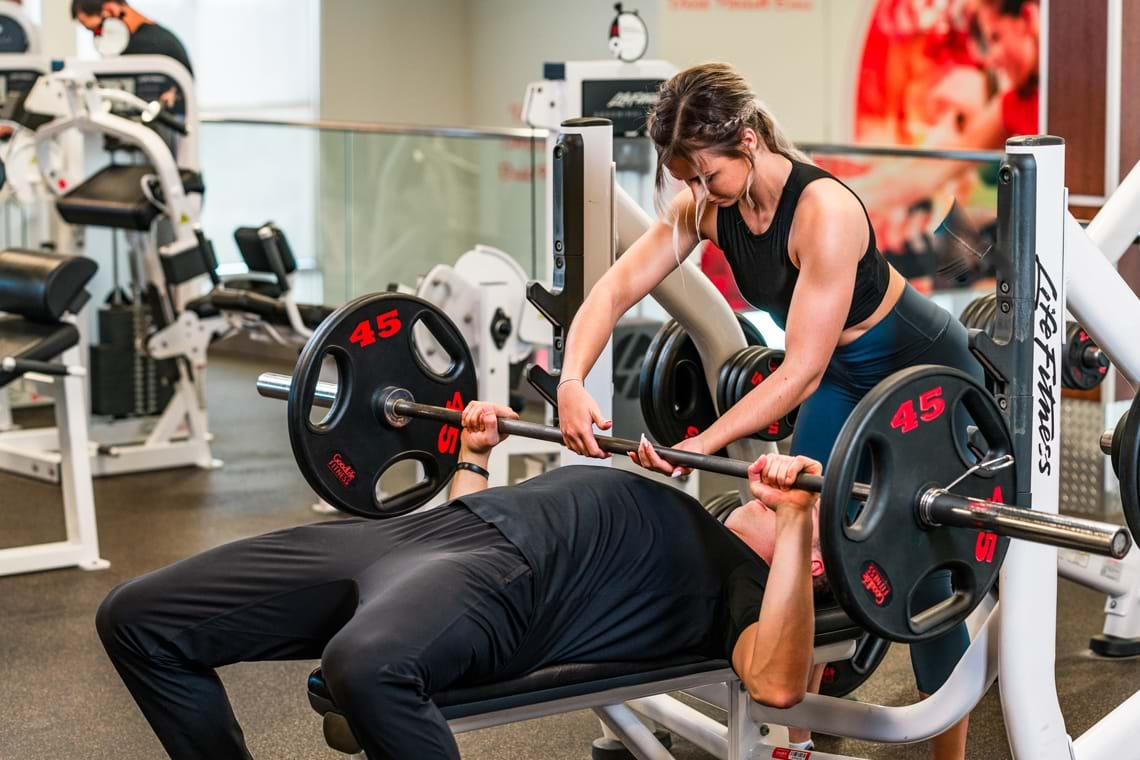When done incorrectly, weightlifting can be dangerous. This is where a spotter comes in. A good spotter not only prevents the potential for injury but can also help you get your next PR. An experienced spotter will help you get into proper position with a heavyweight safely and give feedback on your form. A spotter isn’t there to lift the weights or make lifting easier but to support proper form and help through fatigue or “sticky” moments.
How to be a great spotter:
Pay attention
It’s the spotter’s job to keep a close watch during the entire set. Checking your phone or chatting with friends nearby is not safe. Your job is to stand where you are needed, pay attention and help guide the weight.
Give feedback
Not only are you keeping the lifter safe, but you also want to be giving feedback to motivate the lifter to get the best lift they can. Watch and point out any issues. If there is an issue with form, tell them now to help prevent injuries.
Motivate
This doesn’t mean yelling, “give me another 5 reps!”. Help them push through fatigue and focus on form so they can get in their best lifts.
Know your lifts
A good spotter needs to know proper form to ensure the lifter is using proper technique. Proper form and technique are much more important than how heavy you can lift. The spotter also needs to be able to lift the weight to ensure safety for everyone in case of a failed rep.
Only help when necessary
A spotter should only be helping out minimally. You are there to assist in case of a failed rep. You should only be taking the weight completely if the lifter is stuck or can’t move the weight at all. If you are helping out on every rep, then the lifter is using too much weight. Outside of a failed rep, you should only be helping out at the end of a set.
Communicate
A spotter should always know how many reps the lifter wants to attempt and how they want to be spotted. This lets you know what to expect and gives you an idea of when the lifter might start to struggle or when they will be ready to rack the bar.
Tip for lifters: Never dump the bar. Let the spotter help you rack the bar, this prevents injury to both the spotter and lifter.
Exercises that need spotters:
Explosive lifts like a clean and snatch don’t need a spotter since they are so quick. Stick to lifts that are big and slow where the lifter is under the weight.
Bench Press
Stand behind the bench with your hands beneath the bar without touching it. You can use a reverse grip (one overhand and one underhand) to ensure a solid grip when using a heavier weight. When the lifter needs help, lean in and grab the bar.
Tip: You’ll want to know if they want a lift-off (help lifting the bar off the rack before the first rep).

Barbell Squat
Stand behind the lifter, prepared to help at the hips or under the arms (confirm with the lifter what position makes them more comfortable). If they are using heavy weights, you might want 2 spotters, one standing at each end of the bar. Follow the lifter down in a similar motion to the squat. Your job is to help the lifter maintain a raised chest, so their core doesn’t collapse when fatigue sets in.

Dumbbell Press
Rest your hands the wrists; you’ll only need to touch the lifter’s wrists if they can’t move the weight. You can lightly guide the motion, but they should be doing most of the work. If they need a little assistance, you can press the wrists up from underneath but be prepared to move fast if the dumbbells get dropped after the final rep.

